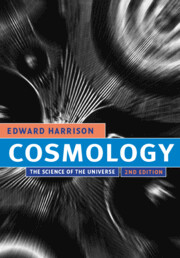Book contents
- Frontmatter
- Contents
- Preface
- Introduction
- PART I
- 1 What is cosmology?
- 2 Early scientific cosmology
- 3 Cartesian and Newtonian world systems
- 4 Cosmology after Newton and before Einstein
- 5 Stars
- 6 Galaxies
- 7 Location and the cosmic center
- 8 Containment and the cosmic edge
- 9 Space and time
- PART II
- PART III
- Appendix – Fundamental quantities
- Index
6 - Galaxies
from PART I
Published online by Cambridge University Press: 05 June 2012
- Frontmatter
- Contents
- Preface
- Introduction
- PART I
- 1 What is cosmology?
- 2 Early scientific cosmology
- 3 Cartesian and Newtonian world systems
- 4 Cosmology after Newton and before Einstein
- 5 Stars
- 6 Galaxies
- 7 Location and the cosmic center
- 8 Containment and the cosmic edge
- 9 Space and time
- PART II
- PART III
- Appendix – Fundamental quantities
- Index
Summary
The fires that arch this dusty dot –
Yon myriad-worlded ways –
The vast sun-clusters' gathered blaze,
World-isles in lonely skies,
Whole heavens within themselves amaze
Our brief humanities.
Alfred Tennyson, EpilogueOUR GALAXY
Milky Way
Our Galaxy, an enormous system of clouds of glowing gas and 100 billion stars, is also known as the Milky Way. Light takes 100 000 years to cross the Galaxy from side to side, and the center of the Galaxy lies in the constellation of Sagittarius, obscured from view by clouds of dusty gas that drift among the stars. Far from the center of the Galaxy is our own star the Sun.
The disk and halo
The Galaxy consists of two basic components: disk and halo (see Figures 6.1 and 6.2). The Milky Way is actually our panoramic view of the disk that has a diameter of about 100 000 light years and a thickness of about one-twentieth, or less, of the diameter. The disk is composed of stars and interstellar gas, and contains over half the visible mass of the Galaxy. The gas amounts to one-tenth of the matter in the disk, and the dust amounts to about 1 percent or more of the mass of the gas. The disk of stars, gas, and dust rotates about the center, or nucleus, of the Galaxy like a giant carousel.
- Type
- Chapter
- Information
- CosmologyThe Science of the Universe, pp. 113 - 133Publisher: Cambridge University PressPrint publication year: 2000

